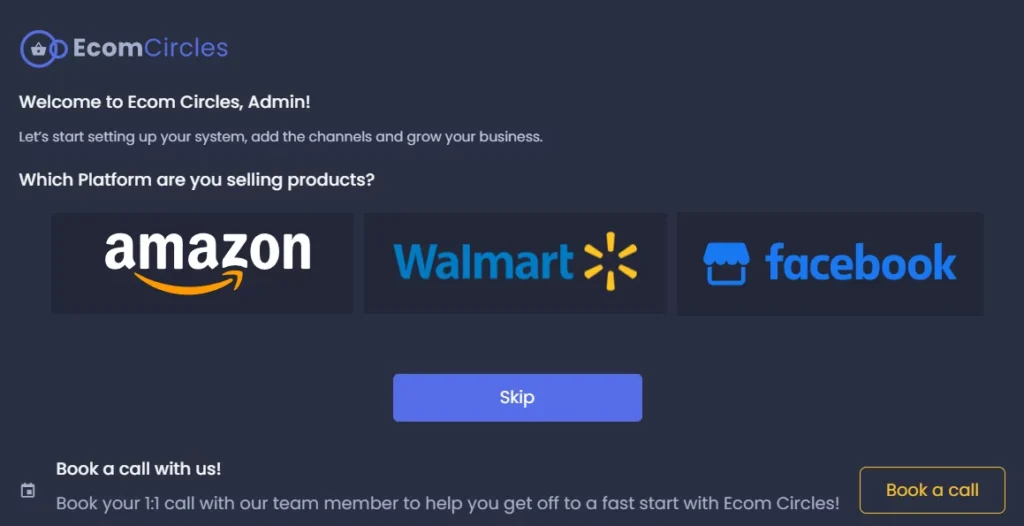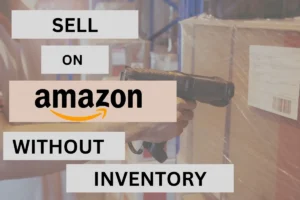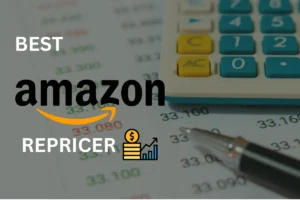Selling on Amazon’s marketplace is a great way to grow your business. But increasingly in today’s customer-oriented environment, buyers expect the return process to be just as fast and smooth as the buying process. For this reason, Amazon requires FBM sellers to provide an address on file so that Amazon can generate return labels back to the said address.
Likewise, for FBA sellers, you have to have a return address on file for returned orders unless you want the items to be destroyed instead. In either case, getting returns sent back to your residence is sometimes not practical or helpful.
In this Complete Guide to Amazon returns, you’ll discover important details regarding Amazon’s returns process for sellers, how it affects you as a marketplace seller, the many types of refunds, and information about services that can help you manage returns effectively.
What is the Amazon Seller Return Policy?

If you are shipping your items via FBM (Fulfillment by Merchant), you will also need to allow for all orders to be returned to you or an address of your choosing. Amazon typically allows returns for at least 30 days according to their Seller-Fulfillment Returns documentation (requires Seller Central Login to view).
Amazon requires sellers to take 1 of 2 actions. Either reimburse the customer for the cost of the item without requiring a return or give the customer a pre-paid label so that they can quickly and easily return the item. In some cases, Amazon may still grant return exemptions (requires Seller Central Login).
If you are selling via FBA (Fulfillment by Amazon), then from time to time you will have items that become damaged, expired, or returned which then need to be either discarded or returned to an address that you specify.
FBA (Fulfillment by Amazon) Returns
For FBA orders, Amazon controls order fulfillment, customer support, and customer returns as aspects of the FBA program. FBA returns are subject to the regular 30-day returns policy.
However, the FBA program comes with its limitations. Amazon may provide reimbursement or returnless reimbursement to the consumer for FBA returns. If the product is returned, it’ll be inspected to see whether it may be resold. The item will simply be added back to your FBA stock if it is determined to be sellable.
Amazon will determine who is responsible for the damages if the item seems to be damaged or faulty in some manner. You could be entitled to compensation if Amazon caused damage to the goods.
The following are some explanations for why a returned item can be deemed unsellable in accordance with the FBA client returns policy:
- The product isn’t in the same state as when it was first advertised.
- It has a flaw, is harmed, has been opened, lacks the necessary labeling, is illegal, or is otherwise inappropriate.
- The item could provide a risk to the health or safety of those handling or receiving it. Commodities, products for personal care, and things with expiration dates are just a few examples of these items, but they are not the only ones.
Within 30 days after their delivery at the fulfillment facility, third-party sellers must remove any products labeled as faulty or customer damaged from their inventory. This removal can happen either by telling Amazon to discard the items or through a removal order which gets sent back to you the seller (or somewhere of your choosing).
FBM (Fulfillment by Merchant) Returns
If you are one of the numerous third-party sellers selling FBM, returned goods are sent directly to you rather than an Amazon fulfillment facility. As stated above, Amazon requires that you have an address on file. This allows them to automatically generate return labels for their customers to an address you specify.
If you have your own warehouse, then setting up your return address to be your warehouse address is typically your best bet since you likely already have staff available to receive, restock, and send out the returned items.
However, if you are one of the thousands of sellers who do not have your own warehouse, there are a few third-party logistics companies like Ecom Circles, who can help you manage the returns process with ease from start to finish.
How Long Is the Return Window on Amazon Purchases?
When shopping on Amazon, it’s important to understand the return window policy. This refers to the specific time frame within which buyers can return their purchases if they are not satisfied. Generally, most items on Amazon must be returned within 30 days of receipt. However, it is worth noting that certain products have extended return windows.
In the case of baby items, the return window policy is quite flexible. Customers have up to 90 days to return eligible baby products. This allows parents ample time to ensure the product is suitable for their little ones. Similarly, for items purchased from birthday gift lists or wedding registry gifts, buyers have 180 days to initiate a return.
For electronics, the return window is a bit narrower. Customers must return electronic items within 30 days of receipt to be eligible for a refund. Additionally, for products bought from third-party sellers, the return window and policy may vary. It’s important to review the specific return policy provided by the individual seller.
In summary, while the general return window for Amazon purchases is 30 days from receipt, there are certain exceptions for different products. It’s always recommended to familiarize yourself with the return policy of the specific item you are purchasing to ensure a hassle-free return process.
What Items Cannot Be Returned on Amazon?
Amazon has a comprehensive returns policy for sellers; however, there are certain items that cannot be returned. The list includes hazardous materials and flammable liquids, which pose a risk during shipping. Products with missing or altered serial numbers are also ineligible for return. Additionally, downloadable software and online subscriptions cannot be returned once purchased.
To ensure customer safety and satisfaction, Amazon restricts the return of items that may pose a risk or are non-refundable due to their nature. It is important for sellers to adhere to these guidelines when listing their products.
It is essential for sellers to be aware of the items that cannot be returned on Amazon in order to avoid any potential disputes or customer dissatisfaction. By knowing these restrictions, sellers can provide accurate information in their product listings and implement appropriate return policies.
What Happens to Returned Products on Amazon
When it comes to returned products, Amazon has a well-defined process in place to ensure fairness and customer satisfaction. Once a returned item is received, its condition is carefully evaluated. If the item is determined to be sellable, it is returned to the seller’s inventory and can be resold.
In case the item is damaged or deemed unsellable, Amazon offers options for sellers. First, sellers have the choice to have the item returned to them at their expense. Alternatively, they can request Amazon to dispose of the item through a removal order. In this case, sellers may be eligible for a credit on their referral fees.
Several factors determine how returned products are handled by Amazon. These include the reason for the return, the condition of the item, and who is at fault for any defects or damages. For instance, if the seller is at fault, they may be responsible for reimbursing Amazon for any return costs. On the other hand, if the buyer is at fault, the seller may still receive a reimbursement, and the item may be returned to their inventory.
Overall, Amazon strives to provide a seamless returns experience for both customers and sellers. By offering fair evaluations and various options for handling damaged or unsellable items, Amazon supports sellers in managing their inventory effectively.
Understanding the Tax Refund Process
Amazon’s tax refund process is relatively straightforward, but the specifics can vary depending on whether you’re using the Fulfillment by Amazon (FBA) service or you’re handling fulfillment yourself.
Here’s a brief overview of the tax refund process for both FBA and Fulfillment by Merchant (FBM) sellers:
FBA Sellers: Amazon calculates, collects, and remits sales tax on behalf of all sellers for orders delivered to customers in certain states that have enacted Marketplace Facilitator laws. This means that as an FBA seller, you do not need to calculate sales tax for orders fulfilled by Amazon. However, you may still be responsible for other tax types, such as income tax or business taxes.
In case a customer returns a product and you need to refund the order, including sales tax, Amazon will take care of this automatically. The sales tax amount collected on the original order will be refunded back to the customer by Amazon.
It’s crucial for FBA sellers to stay updated on tax laws in their home state and other states where their inventory is stored in Amazon fulfillment centers.
FBM Sellers: If you’re an FBM seller handling fulfillment yourself, you’re responsible for setting up tax settings in your Seller Central account.
If you have tax collection obligations (based on your business location and nexus), you’ll need to set up your account to collect sales tax in the appropriate states. You can do this through the “Tax Settings” page in Seller Central, where you can define the states and tax rates for your products.
When it comes to issuing refunds, you’ll have to factor in the collected sales tax. If a customer returns a product and you refund the order, the total amount including sales tax should be refunded. You would then reduce your sales tax payable for that period by the amount of sales tax you refunded to the customer.
Remember, tax laws and regulations can vary greatly by state and can change frequently. It’s important to consult with a tax professional or advisor to ensure that you’re meeting all your tax obligations as an Amazon seller.
Tips when Issuing Refunds
While returns and refunds might be a challenging part of your business, handling it well can lead to increased customer satisfaction and loyalty explore key strategies to manage your return request process effectively, reduce your return rate, and optimize your overall approach to product returns.
1. Establish a Clear Return Policy
Clarity in your return policy is crucial to set customer expectations right from the start. Define the return method, return window (often within days of delivery), and the condition items need to be in for successful returns. You may specify, as part of your refund policy for example, that the original item must be returned to get a full refund.
2. Understand the Reason Behind the Refund
Evaluate the reason behind a customer’s refund request. Did the item arrive in a condition different from what was described or did it get damaged and is in unsellable condition? This evaluation plays a critical role in determining whether to issue a full or partial refund.
3. Prioritize Speedy Refunds
Prompt refunds are an easy way to increase customer satisfaction. While processing a return request might seem like a setback, a swift resolution can help turn a potentially negative experience into a positive one.
3. Foster Open Communication
Always engage with customers in a timely and courteous manner. Clear communication about the return process and expected refund timelines can mitigate customer anxieties and contribute to an overall positive experience.
4. Maintain Detailed Records
Keeping track of your transactions, including product returns, can help you spot patterns, manage your return rate, and protect your Amazon automation business in the event of disputes.
5. Handle Disputes Professionally
Address disputes with professionalism and patience. Finding a mutually satisfying solution can help maintain your reputation as a seller and might even turn a disgruntled customer into a loyal one.
6. Thoroughly Inspect Returned Products
Ensure all returned goods are thoroughly inspected at your fulfillment center. This assessment determines their resale potential and informs the return cost that your business will bear.
7. Implement Restocking Fees
Consider charging a restocking fee for non-defective returns. This approach can help offset some of the return cost, but make sure it doesn’t discourage customers from purchasing.
8. Provide Prepaid Return Shipping Labels
Offering prepaid return shipping labels simplifies the process for your customers and ensures the item is sent to the correct address. Remember, the easier the return process, the happier the customer.
9. Utilize Amazon FBA
Amazon’s Fulfillment By Amazon (FBA) service can take over customer service and returns for you. While the FBA service handles return requests and ships out return shipping labels, you can focus on growing your business. Typically, Amazon offers returns within 30 days from delivery.
10. Invest in Staff Training
If you’re working with a team, ensure they’re adequately trained in handling product returns, understand your return policy, and can communicate effectively with customers.
11. Stay Updated with Amazon’s Policies
Stay on top of Amazon’s return policies to prevent any inadvertent violations that could lead to penalties or suspension.
Mastering product returns is vital for any Amazon seller. By incorporating these strategies, you can enhance your customers’ post-purchase experience and even lower your overall return rate.
Common Seller Issues with Amazon’s Return Policy
In years past, Amazon did not require sellers to have an address on file. Whenever a return was opened by a customer, Amazon gave the seller the option to upload a label of their choice for the buyer to use for shipping back the item. This worked well in most cases and gave FBM sellers a lot of flexibility since they could use different addresses for different items.
However, in many cases, this also caused logistics issues because there were no strict limits in place for how long a seller could take to give the customer a return. In many cases, sellers would upload a non-prepaid label or simply forget to upload anything at all.
Such a scenario could last a week, a month, or a year, resulting in customers not being able to return their items efficiently and not getting their refund.
Amazon realized this issue and chose to start generating labels automatically based on the return address that a seller has on file with Amazon. For Amazon, this provided a solution to their customers’ problems because every customer can now get a return label instantly without having to wait.
However, for some FBM sellers, this new policy created an array of issues since now all returns have to go to a single address.
In particular, this created issues for dropshippers, who don’t hold inventory at their residence or in their own, controlled warehouses. They often have many suppliers each with one or more warehouses of their own. Under the previous policy, a dropshipper could easily upload a label for each specific order so that it could be sent back to the proper supplier.
Since that is no longer the case, dropshippers must comply with Amazon’s policies and have all returns received at a single location. Issues arise for smaller businesses that handle inventory on their own as well.
Receiving multiple returns back to your office or home can be chaotic – particularly if you plan to scale your business or particularly during the holidays. Neighbors also may not appreciate the carrier trucks dumping dozens of products on your doorstep every day either!
The good news is, with the right digital solutions, the process can become much simpler and easier for your business. You can simply outsource your Amazon returns! Ecom Circles returns management services can help you keep your inventory organized and make the entire Amazon returns process a breeze.
Check out our Amazon seller extension for free now!
Ecom Circles Amazon Returns Management

For FBM Sellers and Dropshippers, Ecom Circles makes offloading your returns a very easy and smooth process. Once the return label is generated on Amazon, your customer’s items will get shipped to one of the Ecom Circles warehouses that you select.
We will receive such items on your behalf. Once we receive them, you simply log in and tell us what to do with them. We can either ship it back to you or the supplier if you think you can get a refund.
If you don’t want to return it, you can just mark that the items are being discarded or disposed of and we’ll take care of it! For FBA Sellers We also offer this same service for FBA Sellers who want a warehouse to handle their removal orders for them. We can receive the items, inspect them, and then ship them back in for FBA, or we can just keep the items in our warehouse and fulfill your future orders with them.
Ecom Circles Amazon 3rd Party Sellers Return Service
Getting started with Ecom Circles is quick and easy. You can get started in just a few steps:
- Register for a free account here. Our software is easy to use and it is currently offered for free to sellers who only need help with their Returns. Just visit the link above to get started!
- Once you have your account set up and you are logged in, just click the Amazon logo button to connect your Amazon account to Ecom Circles.
- Next, you have to connect your Amazon Seller Central account. Go to the Warehouse tab and choose one of our warehouses to handle your returns. We have multiple warehouses across the United States for you to choose from. No matter which one you select, they all function the same way.
And that’s all you need to do. As simple as 1-2-3; literally. Once you choose a warehouse, we provide the address and a suite number to use so that the warehouse can identify which packages belong to you. All you need to do is copy and paste our address into Amazon, and we’ll handle the rest.
As soon as a return is opened, Ecom Circles will automatically pull that return into our software via the programmatic connection we have with Amazon Seller Central. (This is done through Amazon’s SP-API connection for you techies out there).
All of your returns will show up on the Returns page so you can clearly see the SKU, item name, inbound tracking number, and the return reason as given by the buyer through Amazon.
We also show you the status of the inbound tracking so you can see whether the buyer ever ships it and if the item successfully makes it to the warehouse. As soon as our warehouse receives it, we can verify the item is actually what was supposed to be returned so that you are not defrauded by your buyers.
Once it’s marked as received, you then have the option to discard it, have it re-listed to Amazon or another marketplace for FBM or have us ship the item into Amazon FBA for you.
Why Choose Ecom Circles?
Our clients want a simple amazon returns service that can receive their returns and manage the post-purchase returns process for them. But Ecom Circles goes above and beyond that.
Our warehouses are not only for amazon returns. With our warehouse fulfillment service, you can use our warehouses for actually storing returned items for a small fee if they want to fulfill future orders with returned items. We’ll even ship future order fulfillments for you! Or if you want to dispose of the item, we can handle that as well.
Explore our Amazon dropshipping software now!






